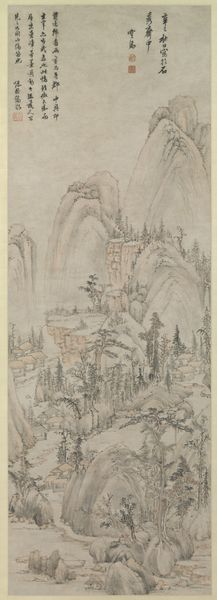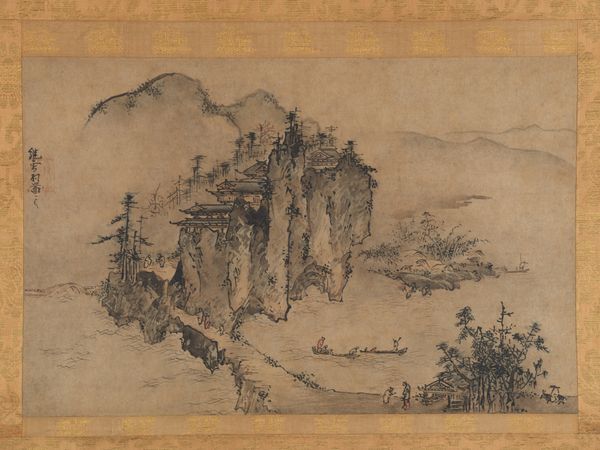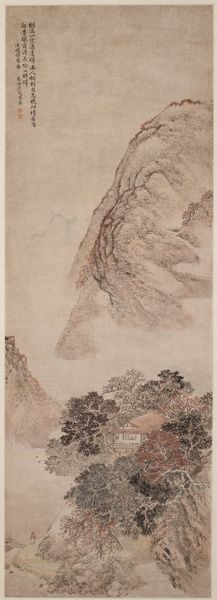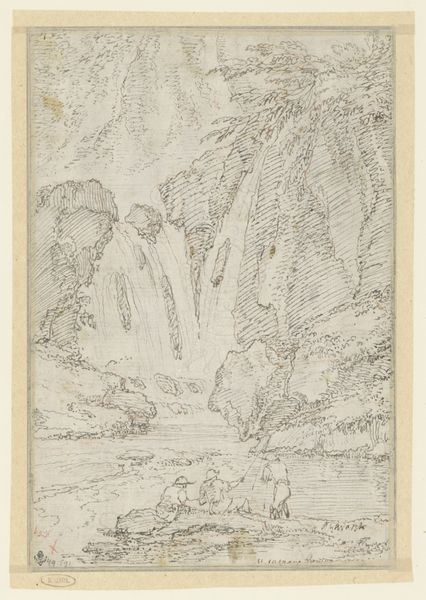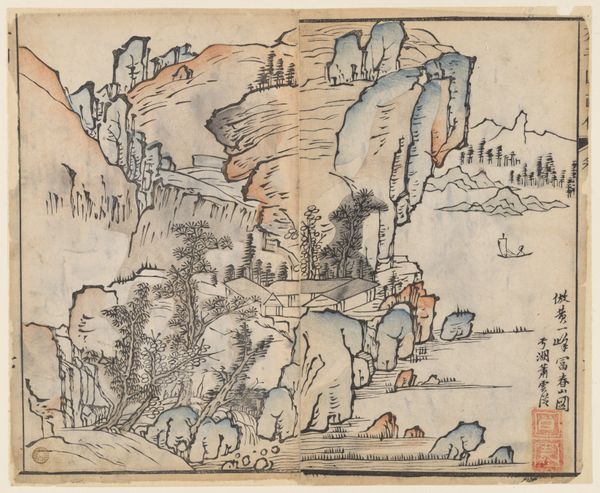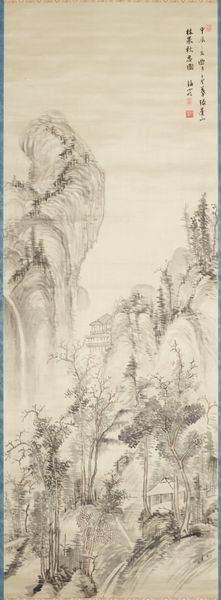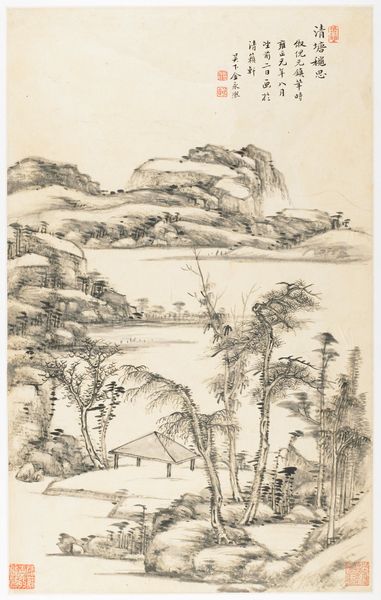
tempera, painting, paper, ink
#
ink painting
#
tempera
#
painting
#
asian-art
#
landscape
#
paper
#
ink
#
calligraphy
Dimensions: Image: 42 × 10 3/4 in. (106.7 × 27.3 cm) Overall with mounting: 8 ft. 11 1/4 in. × 19 in. (272.4 × 48.3 cm) Overall with knobs: 8 ft. 11 1/4 in. × 22 1/2 in. (272.4 × 57.2 cm)
Copyright: Public Domain
Curator: At first glance, I’m struck by how serene it feels; there’s a gentle quality despite the monumental landscape. Editor: Indeed. This is “Planting Chrysanthemums,” an ink and tempera painting on paper from the 16th century, and attributed to the artist Lu Zhi. The work currently resides here at the Metropolitan Museum of Art. Considering the context, the tranquil aesthetic ties in significantly to ideals about the natural world. Curator: Tell me more, especially the institutional role that such a presentation of this landscape plays in its message. Editor: Well, viewing a 16th-century Chinese landscape painting, one cannot forget that it operates within very specific social frameworks. Such works often convey status, the ownership implying education, refined taste, even power. But the landscapes were themselves often places of literati gathering and shared artistic pursuit. In other words, there’s a social and political dimension embedded in the act of displaying, consuming, and engaging with art in this context. Curator: I think your understanding here really emphasizes the complex ways of seeing such artworks in the present. It certainly forces questions about class, artistic circles, and gender too: Whose gaze are we replicating? Where are the female voices of that historical moment, and how is this institutional presentation re-entrenching established modes of patriarchy? Editor: Exactly. Moreover, we can look at the painting’s reception across time: its display throughout various private and public settings contributes directly to our interpretation today, framing not only Lu Zhi’s artistic vision but also shaping cultural assumptions. Think about what the act of collecting itself communicates, regardless of the artwork’s explicit subject. Curator: Right. And I am further reflecting on the very delicate balance of human construction in the lower part of the image versus the vast, sublime landscape—a reminder perhaps, of human existence as one humble layer in this earth, as much about cultivation as awe. The way the mountain ascends with its strokes into wisps—it's ephemeral. I read into this much tension: domination or peace. Editor: Such tensions and complexities are exactly what render these artworks vital and perpetually revealing about human cultures and institutions, past and present. Curator: It helps me appreciate even further just how potent this work of art is today. Editor: It does for me too, thanks.
Comments
No comments
Be the first to comment and join the conversation on the ultimate creative platform.
